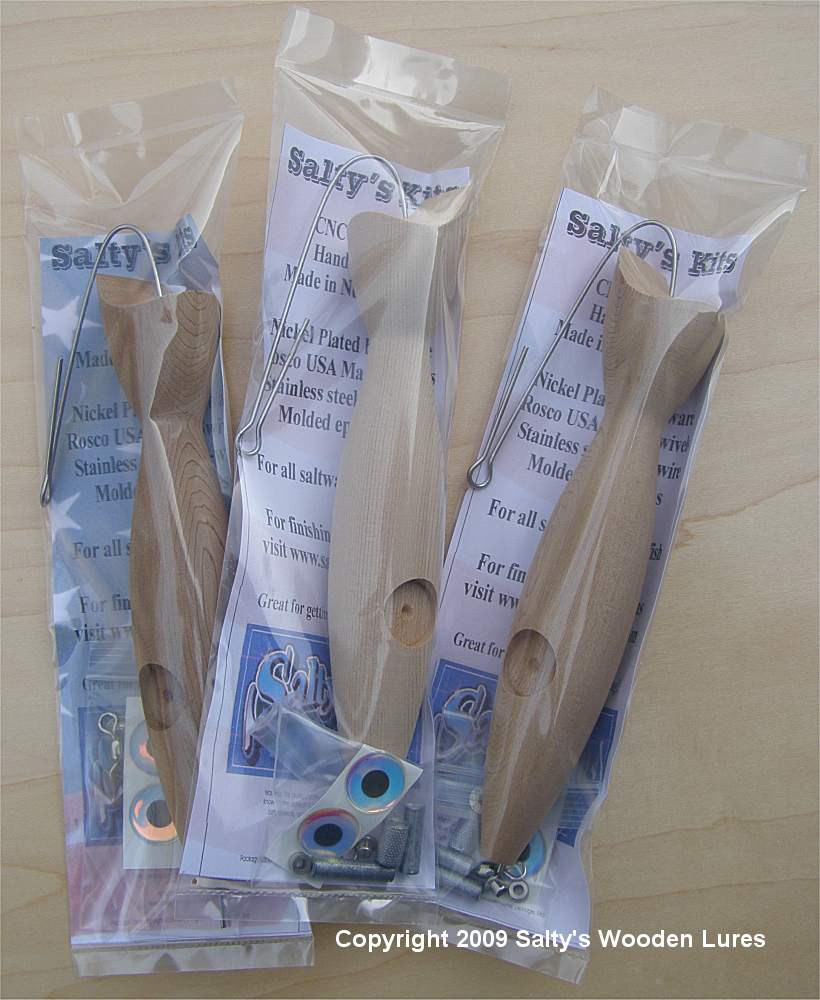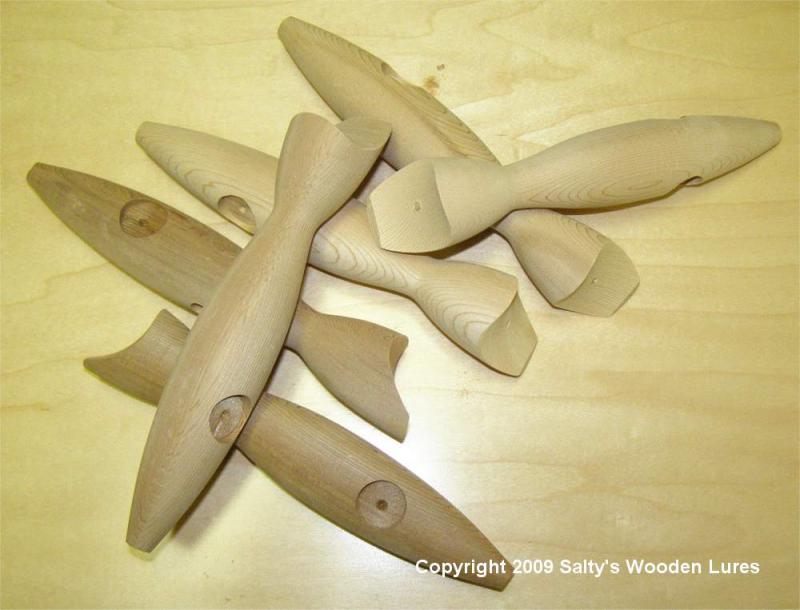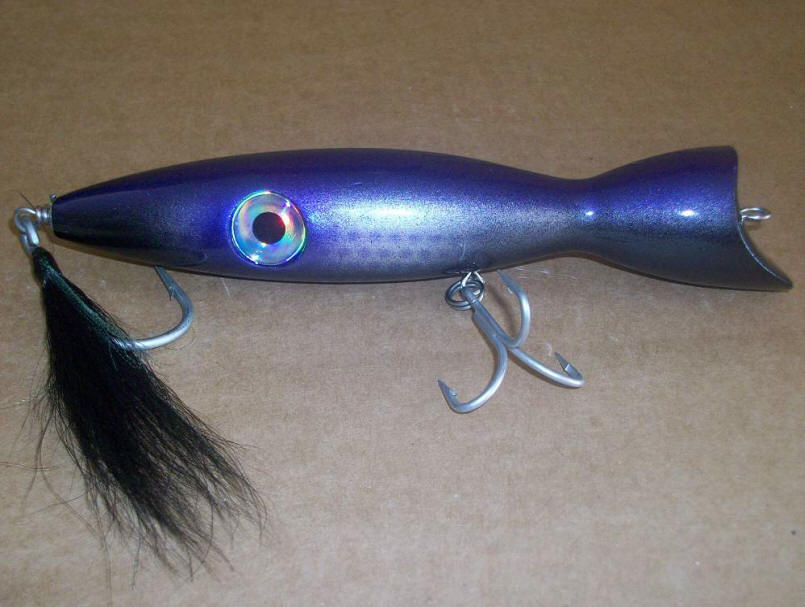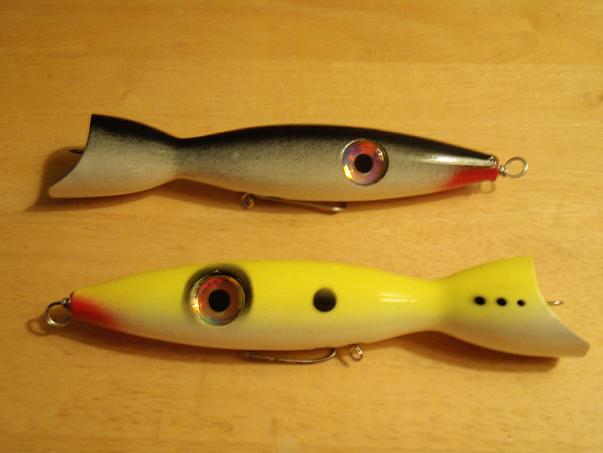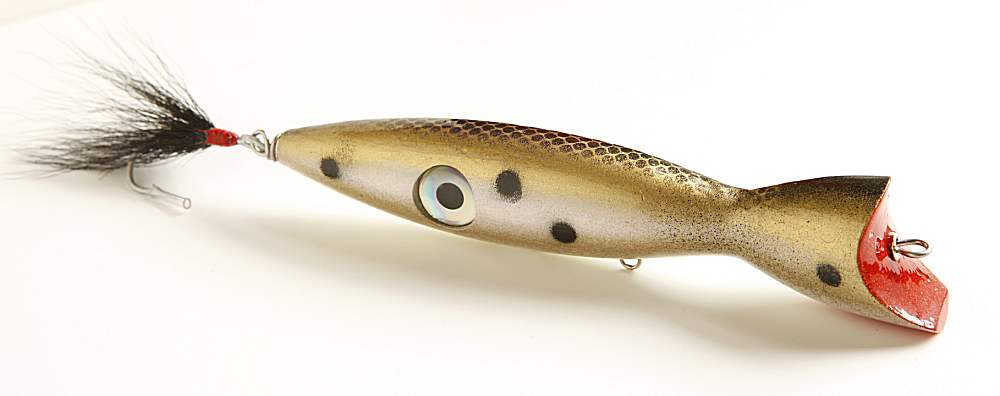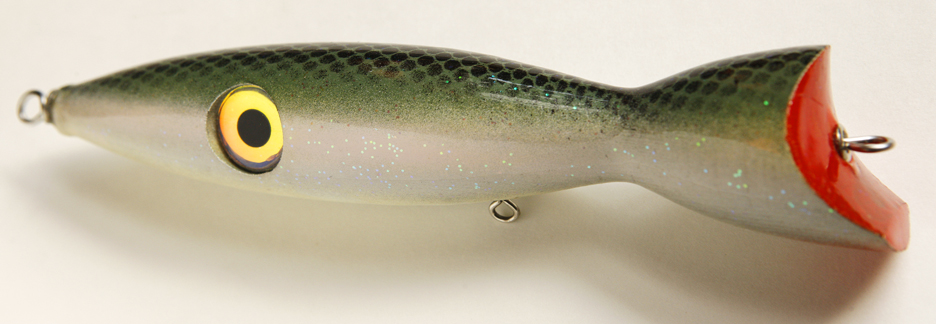|
3 Oz
size, stainless steel thru-wired this is a great casting swimmer! These
will swim with a real sweet tail waggle on top on a slow retrieve and
dive down a few feet on a faster retrieve.
These were made as finished a
few years ago and were fish slayers!
All kits are
sanded out to 150 grit and require minimal sanding-see the special notes
below! Kit is
weighted with one belly weight only-can easily be re-drilled for heavier
weight in the chin and behind the existing belly weight.
This will allow it to swim much deeper.
This swimmer is a copy of an original 1950's Stan Gibbs Swimmer lure
with our own weighting scheme.
It has a large chin for maximum durability.
All components are included except for split rings and hooks which we
recommend a VMC 4/0 treble hook for the belly
and 6/0 Siwash or a buck tail stub on the tail of this lure.
We use only USA made components in our kits!
This
swimmer is a good intermediate kit. It requires gluing the weight in, minor
sanding, and painting/finishing.
You may have to re-drill the through
hole once the weight is glued in, it's very very close. Recommend an
1/8" drill bit in a battery drill and be very careful.
These kits are all turned on our dedicated kit cnc machine and drilled
with precision and duplication second to none!
Can be painted with
Salty's Lure Paint, Createx Air brush
paints, or with acrylic paints and a small brush
from AC Moore,
let them dry thoroughly and coat with a few coats of
clear spray paint or brush with epoxy etc in thin coats for more
durability.
Lures need to be finish sealed to prevent water intrusion. More
information on our free lure forum linked above.
We carry a full line of epoxy topcoats, hooks, paint, etc here:
Lure Hardware
Special notes on finishing this lure.
Do not use any more than 220 grit sandpaper on the nose of this lure.
If you sand the nose too much you will ruin the action of this lure and
it won't swim right.
I recommend that you very lightly "debur" the edges of the face of the
lure using light finger pressure in a direction from the outside to the
through hole
so that you don't cause any splintering, and very lightly touch up the front of the lure
with 220 or 400 sandpaper so that you don't remove any stock.
Don't use a real thick coat of epoxy on these, keep them lightweight,
and always use a loop knot on the front, never tie direct.
|



